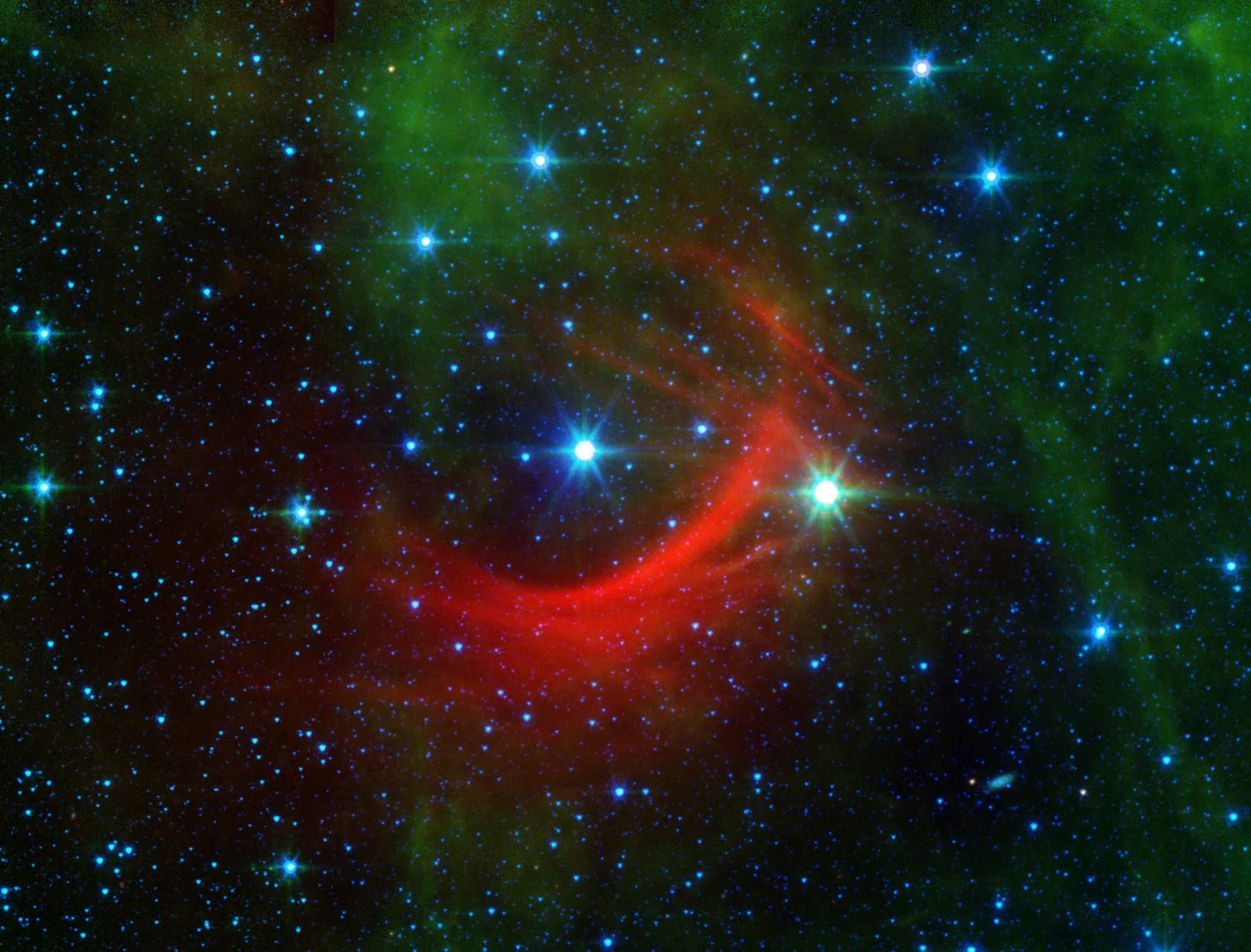Η
κίνηση του άστρου Κ Κασσιόπη δημιούργησε ένα κόκκινο κύμα. The red
arc in this infrared image from NASA's Spitzer Space Telescope is a giant shock
wave, created by a speeding star known as Kappa Cassiopeiae. Credit: NASA/JPL-Caltech
Όπως
η πλώρη ενός πλοίου σχηματίζει ένα κύμα που προπορεύεται στη θάλασσα, τα
γιγάντια άστρα που περιπλανιούνται στο διαστρικό κενό κινούμενα με πολύ μεγάλες
ταχύτητες δημιουργούν και αυτά κύματα καθώς περνούν μέσα από νέφη αερίων και
σκόνης.
The bow shock of
Zeta Ophiuchi, another runaway star observed by Spitzer (NASA/JPL-Caltech)
Τα
κύματα αυτά έχουν λάβει την ονομασία «κρουστικά κύματα» και σχηματίζονται όταν
το μαγνητικό πεδίο ενός άστρου «φυγά» και οι μάζες σωματιδίων που φεύγουν από
αυτό συγκρούονται με τα αέρια και τη σκόνη που βρίσκονται στο διαστρικό κενό.
Here’s another
example of a bow shock. This particular star, photographed by NASA’s Hubble
Space Telescope in 1995, is located in the nearby Orion nebula, an intense
star-forming region of gas and dust. The material belched from the young star,
LL Ori, clashes with slow-moving gas evaporating away from the center of the
Orion nebula, positioned to the lower right of the image. The surface where the
two winds clash is observed as the crescent-shaped bow shock. Image credit: NASA
and the Hubble Heritage Team (STScI/AURA)
Το
διαστημικό τηλεσκόπιο Spitzer εντόπισε ένα τέτοιο κύμα. Το κύμα αυτό
δημιουργήθηκε από το Κ Κασσιόπη (HD
2905), ένα γιγάντιο άστρο που κινείται στο γαλαξία μας με ταχύτητα 4
εκ.χλμ/ώρα. Η κίνηση του άστρου στο διαστρικό κενό δημιούργησε ένα λαμπρό
κόκκινο κρουστικό κύμα.




Δεν υπάρχουν σχόλια:
Δημοσίευση σχολίου